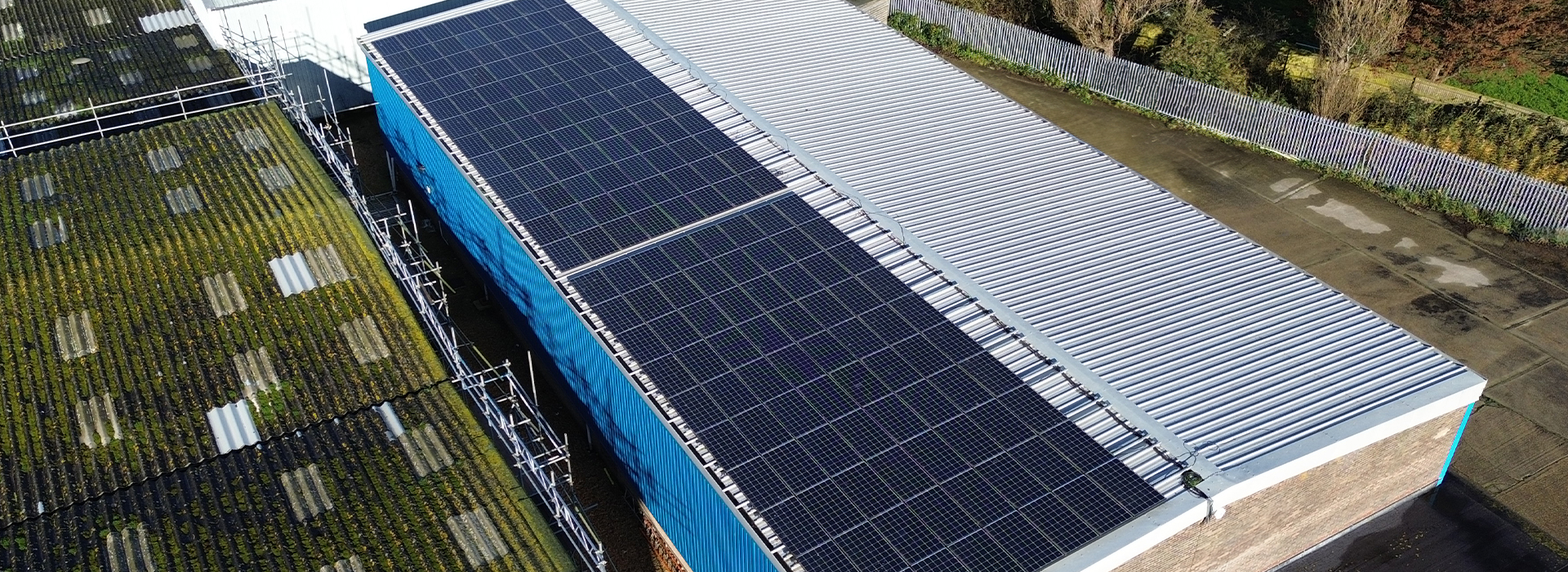Roof walkway systems are an essential safety feature for any building with a rooftop access point. They not only provide a safe pathway for workers to move around on the roof, but also protect the roof surface from damage caused by foot traffic. With so many different types of roof walkway systems available, it can be overwhelming to choose the right one for your building. In this blog post, we will discuss the different types of roof walkway systems, including GRP anti-slip roof access walkways, UPVC walkways, and aluminium roof walkways. We will also highlight and quote the relevant BS standards that these are manufactured and installed too, and discuss the importance of installing and maintaining them.
GRP Anti-Slip Roof Access Walkways
GRP (glass reinforced plastic) anti-slip roof access walkways are a popular choice for industrial and commercial rooftops. GRP walkways are lightweight, durable, and corrosion-resistant. They are also slip-resistant, making them ideal for use in wet or damp conditions. GRP walkways are available in a range of colours and can be customised to fit any rooftop layout.
GRP walkways are manufactured to meet the BS EN 14122 standard, which sets out the requirements for permanent means of access to machinery, walkways, stairways, and platforms. The standard specifies the minimum design and construction requirements, as well as the dimensions and load capacities of the walkway.
UPVC Walkways
UPVC (unplasticized polyvinyl chloride) walkways are another popular choice for rooftop access systems. UPVC walkways are lightweight, durable, and easy to install. They are also resistant to corrosion, making them ideal for use in harsh weather conditions.
UPVC walkways are manufactured to meet the BS 6399 standard, which specifies the minimum loading requirements for buildings and structures. The standard sets out the design wind loads and other loadings that must be taken into account when designing a walkway. It also specifies the minimum load capacity of the walkway.
Aluminium Roof Walkways
Aluminium roof walkways are a popular choice for both industrial and commercial rooftops. They are lightweight, yet strong, and can withstand heavy foot traffic. Aluminium walkways are also corrosion-resistant, making them ideal for use in harsh weather conditions.
Aluminium walkways are manufactured to meet the BS EN 1991 standard, which sets out the loadings for buildings and structures. The standard specifies the minimum design loads for walkways, including the weight of the walkway itself, the weight of people using the walkway, and any other loads that may be imposed on the walkway.
Importance of Installing and Maintaining Roof Walkway Systems
It is important to install and maintain roof walkway systems to ensure the safety of workers and protect the roof surface from damage. The BS standards mentioned above provide the minimum requirements for designing, constructing, and installing walkway systems. However, it is important to ensure that the walkway is designed to suit the specific needs of your building and its users.
Regular maintenance of roof walkway systems is also important to ensure their continued safety and effectiveness. The walkway should be inspected regularly to ensure that it is still in good condition and free from defects. Any defects should be repaired immediately to prevent accidents and further damage to the walkway.
Rooftop safety systems, including fall protection and safety equipment, should also be installed to complement the roof walkway system. Fall protection systems, such as guardrails, safety harnesses, and anchor points, should be installed to prevent falls from the roof edge. Safety equipment, such Another popular material for roof walkways is UPVC (Unplasticized Polyvinyl Chloride). UPVC walkways are lightweight and easy to install, making them a popular choice for industrial and commercial rooftop access solutions. They are resistant to corrosion, chemicals, and UV radiation, making them durable and long-lasting. UPVC walkways can be customised to fit any roof shape and size and are available in different colours to match the building’s aesthetic.
UPVC walkways must comply with the relevant BS standards, including BS EN 516-1:2006 and BS EN 516-2:2006. These standards cover the requirements for non-residential walkways, stairways, and their components. They specify the materials, construction, and load capacity requirements for UPVC walkways.
When it comes to roof walkway installation, it is essential to follow the manufacturer’s guidelines and the relevant safety standards. The roof structure must be strong enough to support the walkway and any loads it will carry. The walkway should be installed on a level surface, and any gaps or voids should be filled to prevent tripping hazards. Handrails and guardrails must be installed to prevent falls, and any openings or edges must be protected with toe-boards and kick-plates.
Maintaining and inspecting roof walkways is just as important as their installation. Regular inspections should be conducted to cheque for any signs of wear and tear or damage. Any defects found must be repaired immediately to prevent accidents. Maintenance should also include cleaning the walkway surface to remove any dirt or debris that can cause slip hazards.
Conclusion
In conclusion, roof walkway systems are essential for providing safe access to rooftops for maintenance and inspection. There are different types of roof walkway systems available, including GRP anti-slip roof access walkways, UPVC walkways, and aluminium roof walkways, each with their unique features and benefits. Compliance with relevant BS standards is critical for the manufacturing and installation of roof walkways. Proper installation, maintenance, and inspection of roof walkways are essential for ensuring the safety of workers accessing rooftops. By following the relevant safety standards and guidelines, property owners and employers can provide a safe working environment for their workers and prevent accidents and injuries.
View our guardrails: https://premsafe.com/landing-pages/guard-rail-and-handrail-systems/



